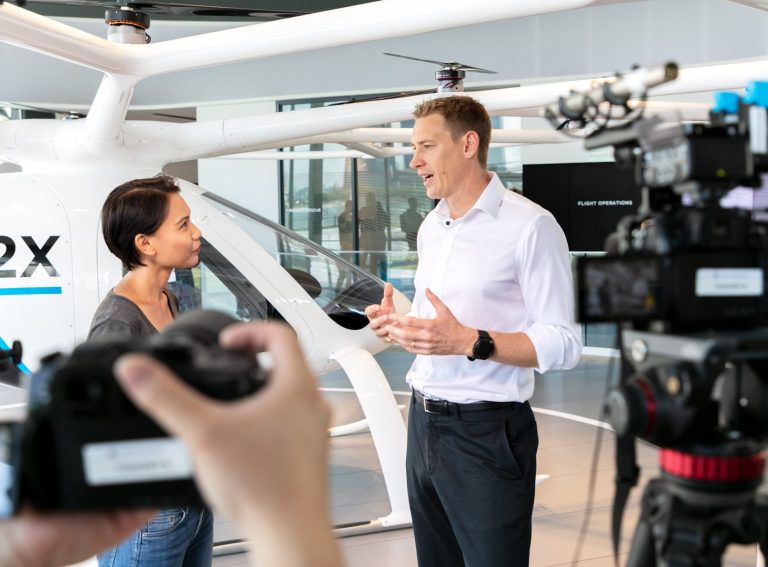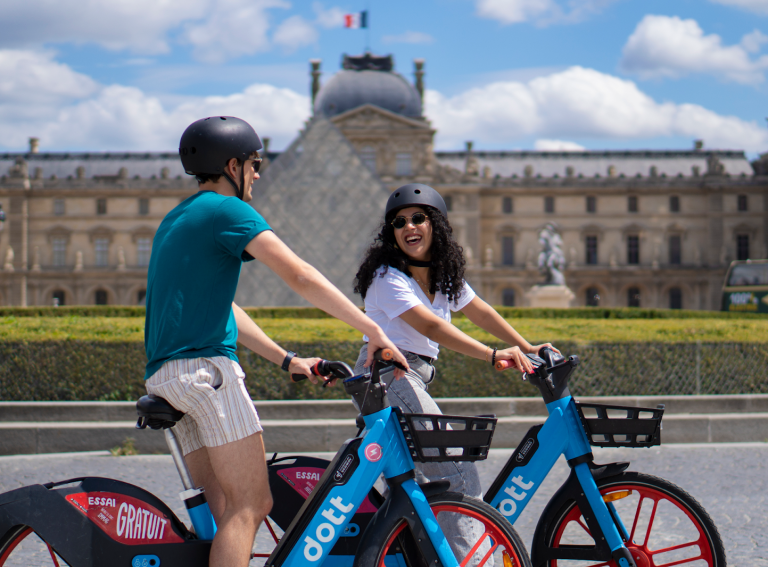Heather Thompson has always been fascinated by cities.
“They’re full of diversity with so much going on. They’re like breathing organisms in and of themselves,” she tells Zag Daily in an interview.
Now as CEO of non-profit ITDP, and with nearly two decades of transport experience under her belt, Heather certainly knows how to keep a city’s heart pumping through her meticulous urban planning.
And we understand her fascination.
Zag: Where did your passion for city development, sustainable transport and climate change come from?
Heather: “I grew up in the Los Angeles area in a town that’s nearby but also far enough from the city. Over the years I saw my town of Riverside become engulfed in the development of L.A. and the beautiful hillsides turned into freeways. I spent so much of my childhood sitting in traffic congestion that it became a very personal issue for me.
“I actually started my career in the environmental and biodiversity fields because I wanted to save those beautiful green places. Then I realised that climate change was one of the biggest challenges that affected everything I was working on—whether it was marine life and fisheries, or biodiversity in the rainforests. Of course, I also learned that transport continues to be one of the biggest drivers of climate change. So, I went full circle back to my original observations of why the environment was being damaged, and I decided to focus directly on transport and urban planning.”
Zag: What does your work at the Institute for Transportation and Development Policy entail?
Heather: “We’re headquartered in New York, but our predominant focus is on the Global South with offices in Mexico, Brazil, China, India, Indonesia, East Africa, and North Africa. Our work in the Global South is based on the idea that we got it wrong with cities like L.A. because they were developed to be so dependent on cars. Our work is focused on helping other cities avoid this type of harmful, car-centric planning. All of our teams abroad are staffed by regional experts that understand the local politics and culture, speak the language, do the advocacy, and have the technical capacity to create better designs for cities. They also support better policy-making across the city, state, national and even international levels. We’re focused on rethinking policies that dictate how money flows into cities and infrastructure, and we try to ensure that this infrastructure is designed around people rather than cars.”
Zag: What modes of transport is the ITDP endorsing?
Heather: “In most countries, walking is the predominant way to get around, followed by public transport, so cities should primarily be built around these more sustainable modes. Buses are the main form of public transport, and in some cities, they are modern and efficient buses, but often they are outdated vehicles that use large amounts of fossil fuels with no guarantee of a reliable and safe service. In many places, buses just aren’t the centre of transport planning and investment.
“We want to make sure there’s more investment in bus systems and public transport that runs smoothly, frequently and provides a dignified ride while not jeopardising the safety of walking or cycling people.
“Cities should be developed in such a way where transport isn’t an afterthought but is built into the backbone of a city. Cities should be dense, not sprawled out, where people can easily walk or cycle to their destination and take public transport. These days, most cities have business centres in one area, hospitals in another, and residential areas in yet another, so people have to commute across the whole city just to get to a place of interest. Instead, cities should be mixed-use, which relies on connected transport systems and the fundamental urban planning that underpins the area.”
Zag: You’ve lived in the US, UK, China and Denmark. How have your experiences differed across these countries?
Heather: “All of these countries have shaped my worldview and who I am. London was one of the first places where I was around extensive public transport. Then I spent a lot of time in Denmark and, of course, Copenhagen is known as the city where cycling is wonderful. Denmark opened my mind to the idea that cycling wasn’t just for recreation but about freedom, especially because I was a student and didn’t have much money for public transport.
“I also lived in Guangzhou, China in the late 1990s when they were going through a huge growth phase in the city and developing their ring roads. It looked like one big construction site with no good way to get around. This again opened my eyes to the negative impacts of development that put cars before people. I thought L.A. was bad, but when you don’t have a way of getting around and everything feels unsafe, you start to understand how critical it is to have multiple forms of transport access. China, like so many places, is going through such immense growth. Now is the time. We must work together to ensure all growing regions get their urban development patterns right and create more sustainable, equitable infrastructure for the future.”
Zag: You say that ITDP is focused on helping regions get their transport patterns right, but what does that look like?
Heather: “Too often, transport systems are oriented around men’s commutes from home to work. But when you actually look at the people moving around every day and using these systems, most of them are women with different transport patterns.
“Instead of going from home to work and back, they’re going to multiple locations. They take their children to school or care centres, often caring for elderly parents, taking them to hospitals, and going to grocery stores. It’s many more small rounds, yet our transport systems are not organised around those short trips.
“Developers will often build big metro stations designed to get from downtown to residential areas. We really need bus systems with many stops so people can get on and off across the city. These trips should be safe and reliable, and there are simple things that should require more consideration. Is there adequate lighting when you’re waiting at a bus stop or a metro stop? Are there enough people around so you feel safe? Thinking about these things that make women, caregivers, and children feel safe is crucial when most public transport users are not men. We need to be organising our systems around their needs to be successful. ITDP has actually researched these concepts in cities around the world, from Cairo to Rio de Janeiro to Chennai.”
Zag: You’re one of the few female CEOs in the transport industry. What challenges have you faced?
Heather: “It’s challenging to be one of the only women in the room when men sometimes don’t think you have much to say because you’re a woman. I’ve had to rise to that challenge and make sure my voice is heard by speaking up, staying well informed, and believing that people want to listen to what I have to say. Also, I’ve been focusing on finance in the sector as there are not enough women in the finance space. I’m trying to be a vocal voice while working with multilateral development banks. One of the things I’m proud of is our recent work with the World Bank to promote the importance of investing in cycling infrastructure and highlight the ways that different modes of transport should work together to provide more opportunities for women, children, and caregivers.”
Zag: What should businesses be doing to make transport more hospitable for women?
Heather: “There are so many brilliant women out there, and it’s just a matter of looking for them. At ITDP, around 60% of our team members and leaders are incredible women. We must also tackle the incorrect assumptions that have gone into building our transport systems for decades. For example, there’s a fixation on electrification as an easy fix. Don’t get me wrong, electrification of vehicles is so important, and we need to get fossil fuels out of the transport space, but we need to do it in tandem with other policies that create cities where you can walk, cycle, and use public transport.
“Focusing on the fundamentals of equitable urban planning is a starting point because if we have electric vehicles travelling long distances, they’re still dependent on electricity from a grid. Yes, we are greening our grids with renewable energy in some places, but they’re not green just yet. According to our research in The Compact City Electrifed, developed with the University of California and Davis Institute for Transportation Studies, embracing walking, cycling, and public transit over the next decade can quickly reduce the demand for car travel, buying time for electric vehicle technology to improve. Electrification should go hand-in-hand with compact city development and together this will minimise the need for vehicles overall. Then, of the vehicles left, these should be electric.”
Zag: What is ITDP focused on for the rest of this year?
Heather: “We’re trying to nail sustainable transport financing for 2024. We’ve all been hit by the COVID-19 pandemic and the last few years were challenging for public transport systems. Getting more financial support is key, and encouraging development banks like the World Bank and Asian Development Bank to focus more on transport is a huge part of the equation. But also countries at a national, sub-national, and city level should prioritise sustainable transport. Electrification, again, is wonderful but the focus should be on supporting electrification in the public transport sector, not just for private vehicles. Bus electrification is huge for us at the ITDP, and we’re calling this year ‘the year of the bus.’ We’re focusing on bus rapid transit, or BRT, systems in particular. BRT is like a metro system built in dedicated lanes, using buses overground instead of underground trains. BRT stations are also like metro stations where you have a smart card, and the doors automatically slide open and closed, so people can get on and off quickly. They’re much quicker and cheaper to build as well. ITDP recently published a new edition of the BRT Standard, a tool and framework that helps create a common definition of BRT and promote more high-quality bus systems worldwide.”
Zag: Who is one woman you’d like to spotlight from the new mobility industry?
Heather: “It’s a long list, so I can’t name just one! Recently, I’ve been able to work with many women at high levels whose passion and perseverance have inspired me. First, there’s Monica Bansal, who is working at USAID and trying to push for more attention to transport and urban planning. Fernanda Rivera, Mexico City’s Mobility Ministry Head of Transportation, is working to improve the city’s paratransit integration into the public transport system. There’s also Ana Toni, who we worked with in Brazil for years and is now the head of the Ministry of Environment for the country, who is doing incredible things to get more attention to air quality and climate change. Suzanty Sitorus has been a champion for climate change in Indonesia and is now leading an innovative local foundation called Viriya. Claudia López recently left her post as Mayor of Bogotá, Colombia. This is one of the most incredible cities in the world for public transport, with an amazing BRT system and extensive protected bike lanes. Claudia has been a champion for those systems with special attention to women and caregivers. And, of course, the women leaders at ITDP who inspire me every day with their positive impacts around the world.”





